Bernafay Wood
After Carnoy the cloud started to drop, a shield of it obliterated the sun. Within twenty minutes the light had almost completely failed, the air filled with prickles of moisture. It took a good hour to lift as the edge of a small front slid in from the South West. It had been warm enough to not bother with a jacket, the temperature lowering with the sunlight. Bernafay isn’t far, under ten minutes for a crow, but it’s surprising how different it felt after the haze and sun of the rise in the land to the West where I’d stood and looked over at the edge of Delville and Bernafay Wood then distant Trones Wood half hidden in the veil of mist rising off the damp fields in the early spring sunlight.
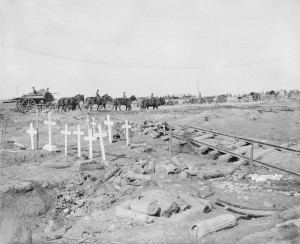 The mist clung now, damp and cooling in the hollow-way that runs down-slope between the wood bottoming out just before rising past the fields near the CWGC cemetery. Water hanging in the trees in the still air, the light still fading. I dumped the car on the pink gravel outside the gate to the burial ground, a wall away from the uneven rows of stones, Change my jacket for a weatherproof one in view of each of the rows of white marking a person and a time. I don’t hang about in the cemeteries these days generally, it’s not what it’s about. I find a quick wander as a hat-tip, say hello to the ones I know, maybe look up a relative of someone if there’s a Great Uncle there. It’s as much a walk through the dates and times. You get a feel of how the sweep of events makes the layout, build the environment around the burials. It varies terrifically from one place to another, sometimes there will be a mass grave; the bunches of stones with barely a fag paper between them, or multiple burials in one grave, dates synchronised, that mark some catastrophic event. Or a run of one date in a row; a slow afternoon being nailed one by one by a shooter peering over a parapet hidden in the edge of the wood, a shell hitting a limber on a road, a bus crash of an attack. Sometimes you can tell sometimes you can’t.
The mist clung now, damp and cooling in the hollow-way that runs down-slope between the wood bottoming out just before rising past the fields near the CWGC cemetery. Water hanging in the trees in the still air, the light still fading. I dumped the car on the pink gravel outside the gate to the burial ground, a wall away from the uneven rows of stones, Change my jacket for a weatherproof one in view of each of the rows of white marking a person and a time. I don’t hang about in the cemeteries these days generally, it’s not what it’s about. I find a quick wander as a hat-tip, say hello to the ones I know, maybe look up a relative of someone if there’s a Great Uncle there. It’s as much a walk through the dates and times. You get a feel of how the sweep of events makes the layout, build the environment around the burials. It varies terrifically from one place to another, sometimes there will be a mass grave; the bunches of stones with barely a fag paper between them, or multiple burials in one grave, dates synchronised, that mark some catastrophic event. Or a run of one date in a row; a slow afternoon being nailed one by one by a shooter peering over a parapet hidden in the edge of the wood, a shell hitting a limber on a road, a bus crash of an attack. Sometimes you can tell sometimes you can’t.
The stones lie too, they don’t necessarily entirely reflect the scene below, the mixed mass. Above ground these places are often roughly synchronous but never entirely regimented. These stones can mark a trench full of men, each hurriedly wrapped in a blanket or a ground sheet some of these places even start as a shell hole filled and covered over. In time too, we’ve had the passage from the original wooden markers to these fastidiously neat white tablets. This is where the pattern is followed, here from Abbott to Yardley over nine hundred of them: Badge. Number. Rank. Name. Regiment. Date of death. That’s how it plots out, the regimental tidiness above the mess. At the foot of the stone in upper case near the soil is the postscript, the personal, chosen letters nearest the man within the rules of then IWGC – the sixty-odd character limit – like twitter for the passed. These are shorthand messages from home etched into the base. One from Hackney, 28 Richard William McHard; He went, our dear and loved one. From Newport, Private William James Inns, beside his mates they brushed the horses and cleaned the tack, he’s 23; Fiat Voluntas Tua, merciful Jesus, give him eternal rest, and on and on, in stone, typed sheets and pixels.
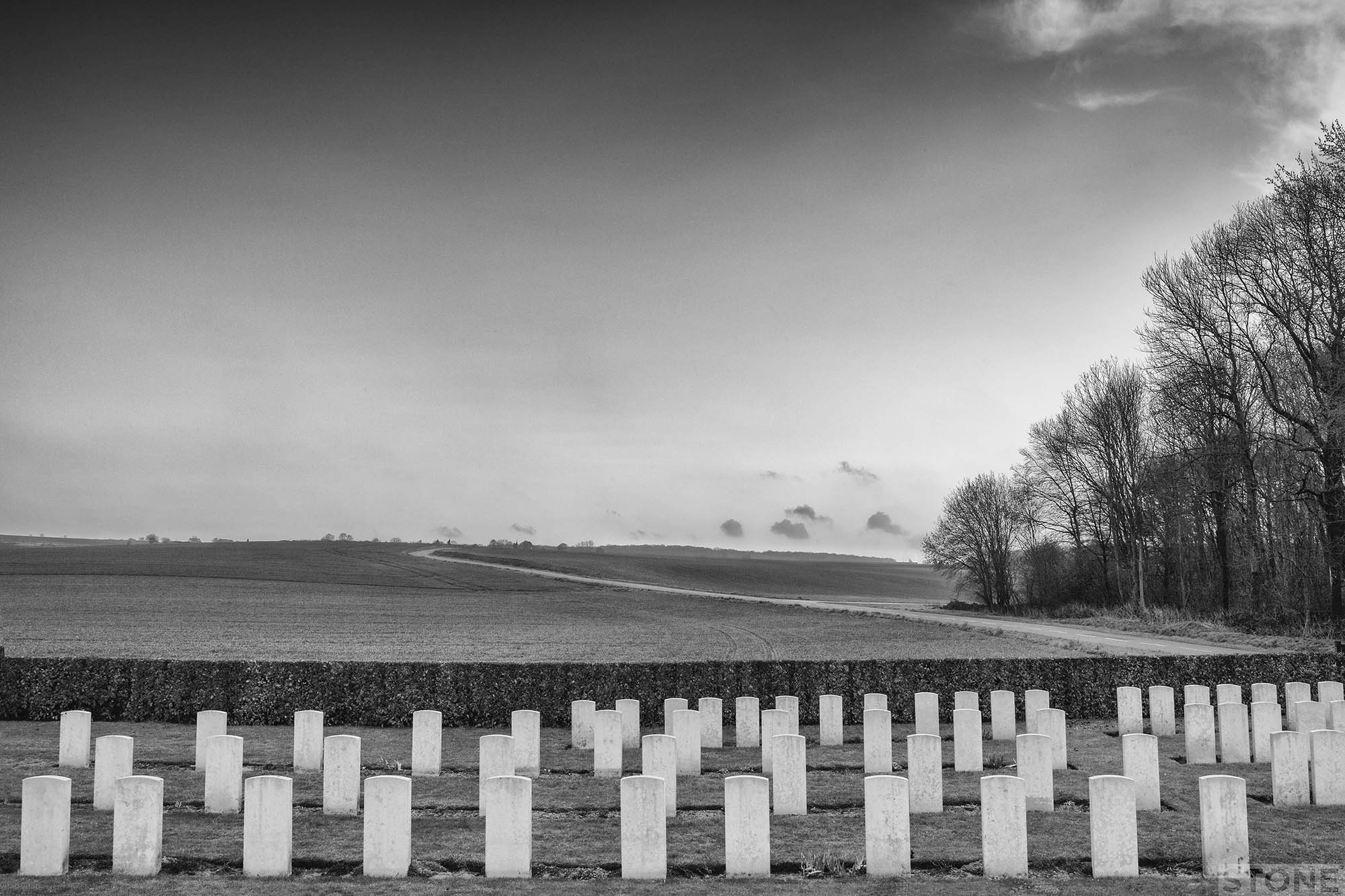
There’s a man in here called Riches, Edgar Charles, I thought I’d say hello, I have met people with his surname in Norfolk everything end up in one place eventually. He came from Banham where the famous local zoo is, my children liked the Ocelots we had ice cream and stared at other stupid apes that scratched their arses and stared back. Edgar left Norfolk permanently via a stint in the 1st Battalion Grenadier Guards. His final exiting breath was on the 11th September 1916. He was 19 years old, one of ten children.
Somewhere, his Pip Squeak and Wilfred; the medals; the badges of the done deed, the proof along with his scroll and dead man’s penny sit in a drawer or maybe framed and hung on a wall, maybe glanced at, maybe studied. I don’t know, who does. All these men, all this un-inked, unknown future.
He’s at the front near Richard and Billy but not in the raised area that I think marks the original few burials on the edge of the wood. He’s wasn’t actually buried here originally. According to the paperwork he was disinterred and reburied here after the war. One of many men moved in the clearances and tidy up and is part of a concentration that fateful not quite sure who is who now thing.
The wood opposite is silent, no one is in sight. I cross the road to the edge of the mixed band of trees, wet my boots in the damp grass. A single Renault goes past up towards the crossroads changing down to accelerate, the whine fading up the hill.
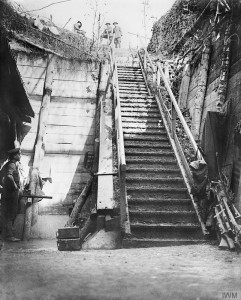 Bernafay is silent and damp. I make a tentative foray in on the sloping path and climb up towards the middle, the track is slick and muddy, the undergrowth thick even this early in spring, the light penetrates the almost leafless canopy enough to make out the shape and form of the surface beneath the limp grass, bramble, and unrolling ferns. It is a bumpy place. Without using your imagination you can make out a communication trench on the left, there are depressions and lumps that are clearly the remains of the beating it took. Bernafay boasted some quite remarkable feats of German soil engineering including some trademark deep dugouts, open to the sky they had rugged stairs that would almost grace a large house. Deep set and safe places now filled in and lost in the woods.
Bernafay is silent and damp. I make a tentative foray in on the sloping path and climb up towards the middle, the track is slick and muddy, the undergrowth thick even this early in spring, the light penetrates the almost leafless canopy enough to make out the shape and form of the surface beneath the limp grass, bramble, and unrolling ferns. It is a bumpy place. Without using your imagination you can make out a communication trench on the left, there are depressions and lumps that are clearly the remains of the beating it took. Bernafay boasted some quite remarkable feats of German soil engineering including some trademark deep dugouts, open to the sky they had rugged stairs that would almost grace a large house. Deep set and safe places now filled in and lost in the woods.
I head back down, walking up is treacherous. I’ll circle the Eastern edge and come back down the middle if time allows. As I exit back onto the top of the wood I notice someone in the field, his neck bent studying the ground, a trophy hunter maybe, looking for remains to sell. He is young, his build suggests mid to late teens, we raise a palm at each other. His car is parked not far off. He is a French. The car is decked out with probationary driver stickers, a poppy jammed in the grill, a British legion sticker in the side window. This land here, near the car, is where Edgar was originally buried. This was a small plot, Bernafay North Cemetery, there is no trace under the clear lines of the plough, just the occasional orange glow of shrapnel between the white flint cortex and chalk fragments in the soil.
There is a road wide path around the Western edge, grassed and easy to walk. There are crops between here and Trones Wood, which isn’t really that far away on a day like this. I could walk across it in a few minutes, but then there’s no machine guns or rifle fire. It’s from here that the 17th and 18th Manchesters emerged and fought their way across and then sat down hard in Trones to catch their breath and held it. I walk up to where Trones Alley lay, now ploughed in except in the edge of the trees; A German defensive trench-line that linked the two woods. The peace breaks, up here the air is thick with petrol fumes, I start at the sudden noise of engines, there are quad bikes, men with trailers and 4x4s over near the Southern end of the wood. It is I think time to desert, not be here away from all this present intruding on the past. I walk back below the thinning cloud. The boy is deeper in the field, a stick of shadow against the dirt, still searching.
Photos and text: © Nick Stone 2016 Archive photos: IWM. Bernafay Wood Cemetery in 1916, and the Deep Dugouts captured in Bernafay Wood.

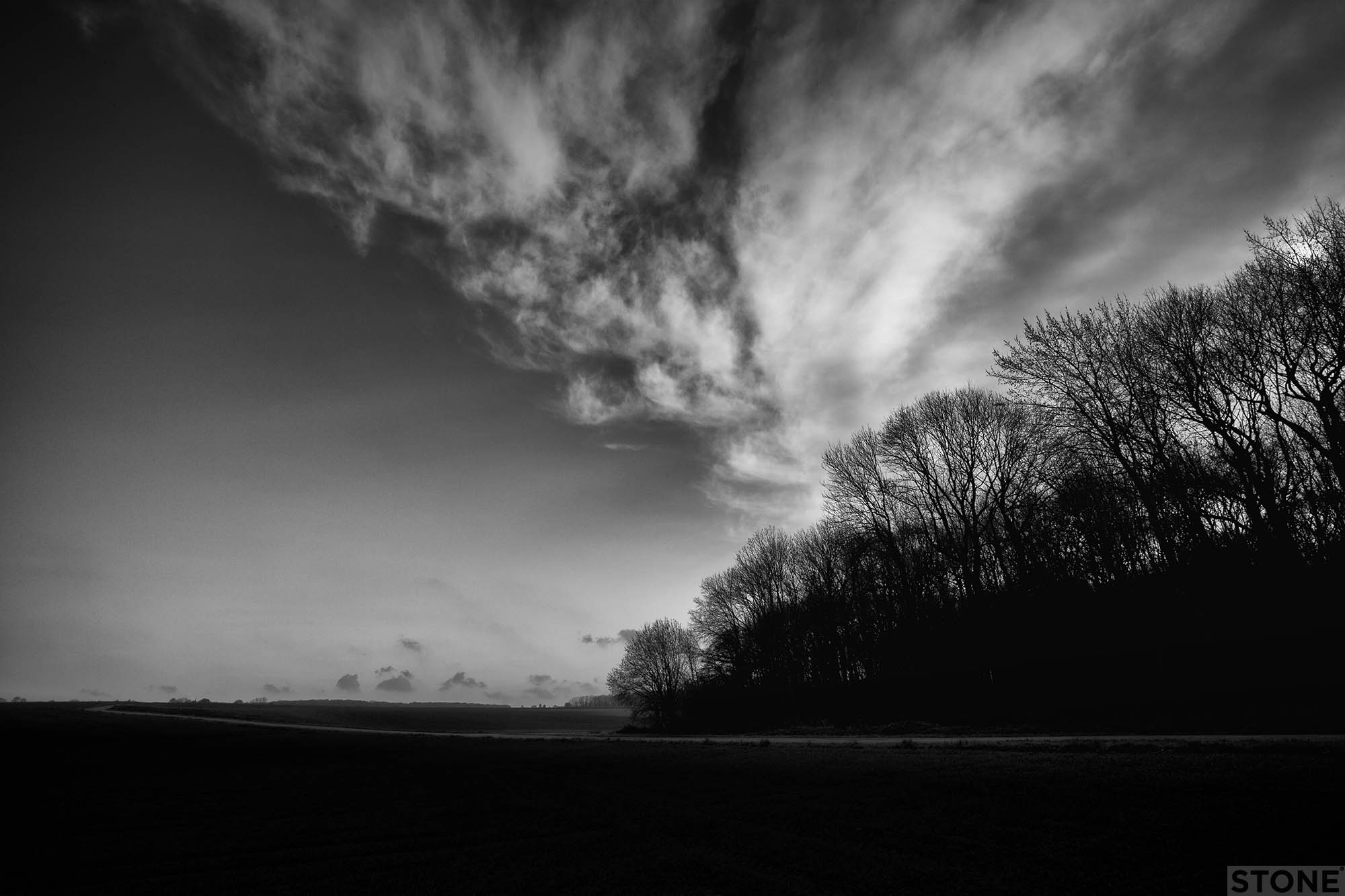
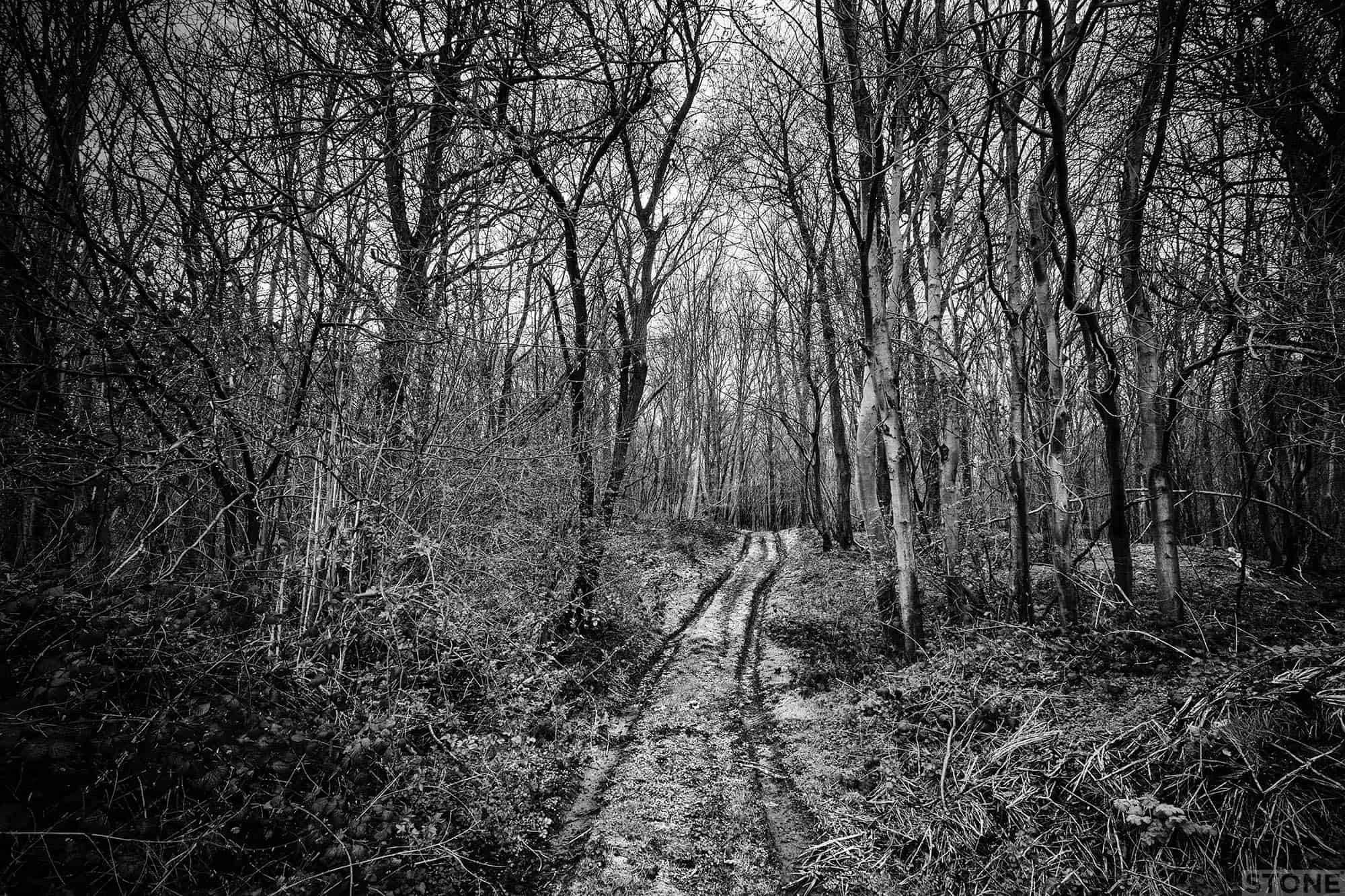
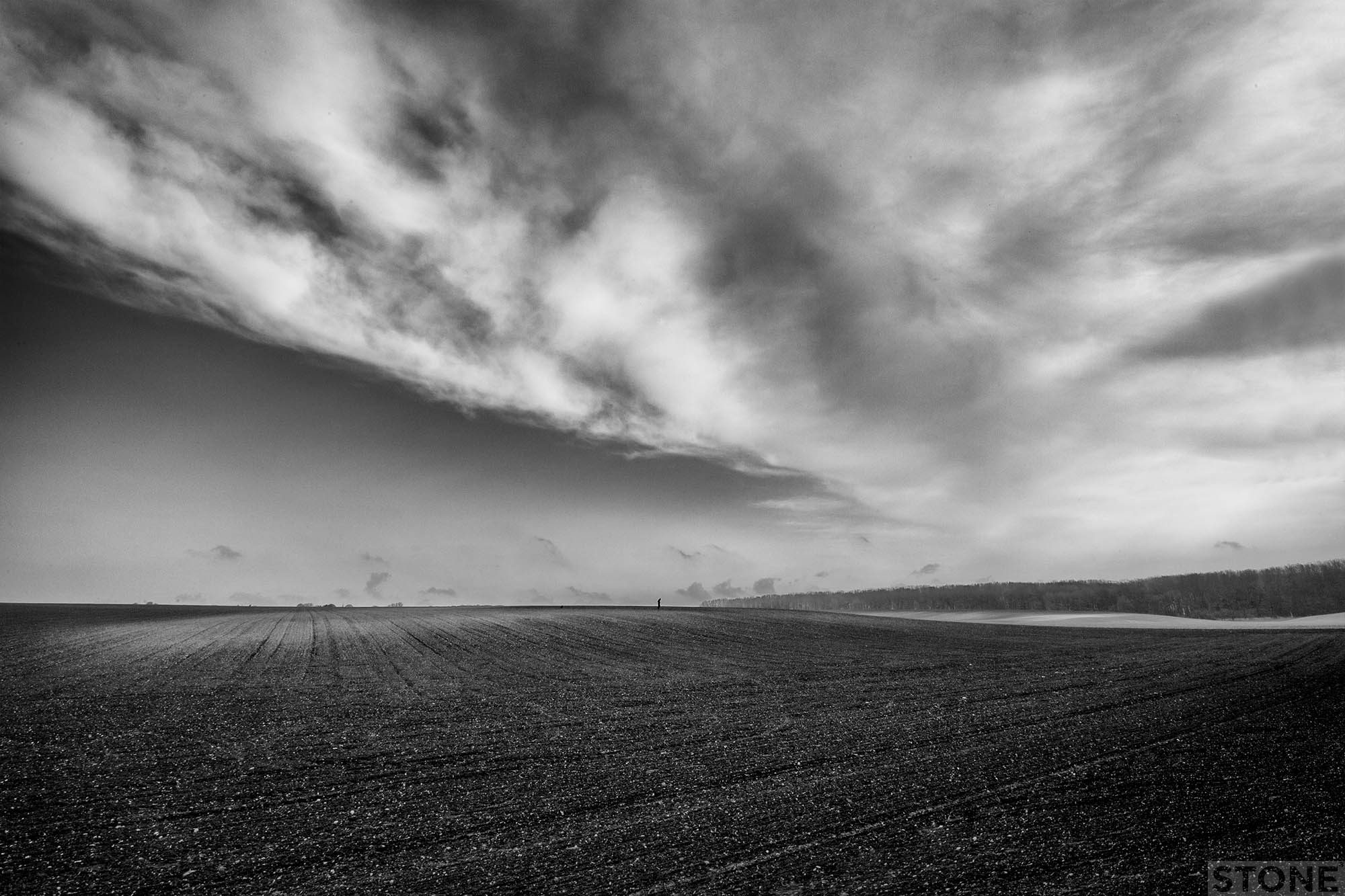
Re article Bernafray wood,Edgar Riches was my great uncle,I know where his medals and death penny are.They were sent to my late grandfather ,Edgar’s brother sergeant Albert Riches,Edgars older brother and have come down through the family with my Grandfathers medals.The present custodian is my brother Andrew Haylett .
Hi Jayne. Sarah has been in touch and sent me a rather remarkable document. If you have more info please do email me on info@invisbleworks.co.uk. I’m going to add some of it to this as an addenda as it really fleshes out part of the story. Also I’m hoping to include some information about Edgar in my exhibition in NOvember. Thanks you.
Nick